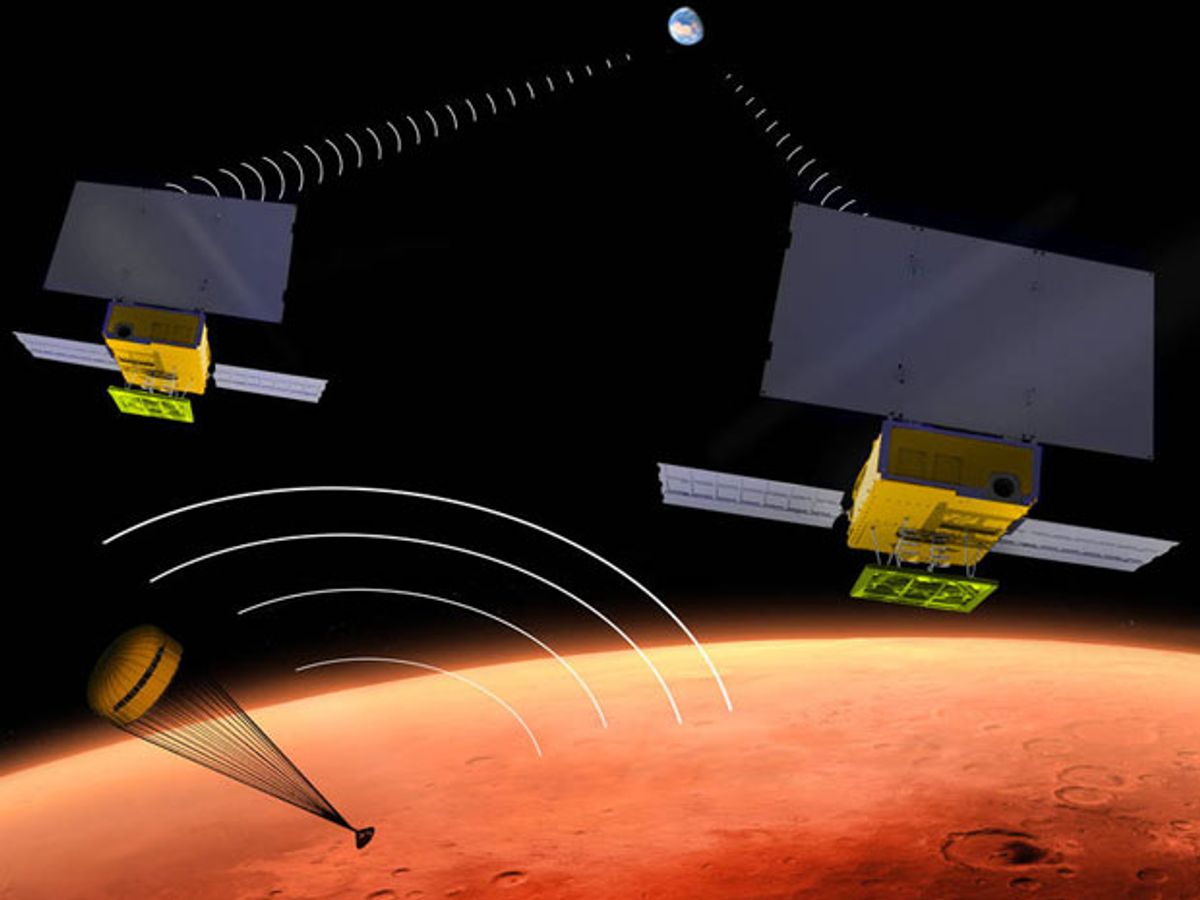The first interplanetary CubeSats—satellites based on cubes just 10 centimeters wide—will be deployed during the next mission that NASA sends to Mars, the agency says.
CubeSats, whose dimensions are based on the size of a Beanie Baby box one of their inventors found in a shop, are one of the cheapest, most efficient ways to get communications networks into space. Weighing in at just 1 to 10 kilograms, these "nanosatellites" usually pack little more than solar panels, communications equipment, and a few scientific instruments. But now researchers are developing tiny propulsion systems for CubeSats to help them orient themselves, maneuver, and even rocket to new orbits.
Dozens of CubeSats have been launched into Earth orbit over the years; they usually piggyback on rockets taking up larger spacecraft. Now NASA is planning to fly two CubeSats into deep space for the first time, launching them with InSight (Interior Exploration using Seismic Investigations, Geodesy and Heat Transport), NASA's first mission to understand the interior structure of Mars.
The Mars Cube One (MarCO) mission under development at NASA's Jet Propulsion Laboratory in California consists of twin communications relays. Each 36.6-by-24.3-by-11.8-cm unit is.roughly as big as six basic CubeSats—or about the size of a briefcase.
NASA’s plans call for MarCO to be launched on the same United Launch Alliance Atlas V rocket that will lift NASA's InSight lander from Vandenberg Air Force Base in California next March. The pair of satellites will separate from the booster rocket after launch and travel along their own trajectories to Mars, making independent course adjustments on the way.
InSight will transmit data in the UHF radio band. MarCO's softball-sized radio can receive UHF signals and transmit and receive in the X band. Without MarCO, data from InSight relayed via the Mars Reconnaissance Orbiter would be delayed by hours, since the Mars Reconnaissance Orbiter cannot simultaneously receive information on one band while transmitting on another.
The agency hopes that the twin nanosatellites will help transmit status updates about InSight to Earth in real time as the stationary craft lands on Mars in September 2016. If MarCO succeeds, CubeSats may become common on interplanetary missions, the agency says.
Charles Q. Choi is a science reporter who contributes regularly to IEEE Spectrum. He has written for Scientific American, The New York Times, Wired, and Science, among others.



